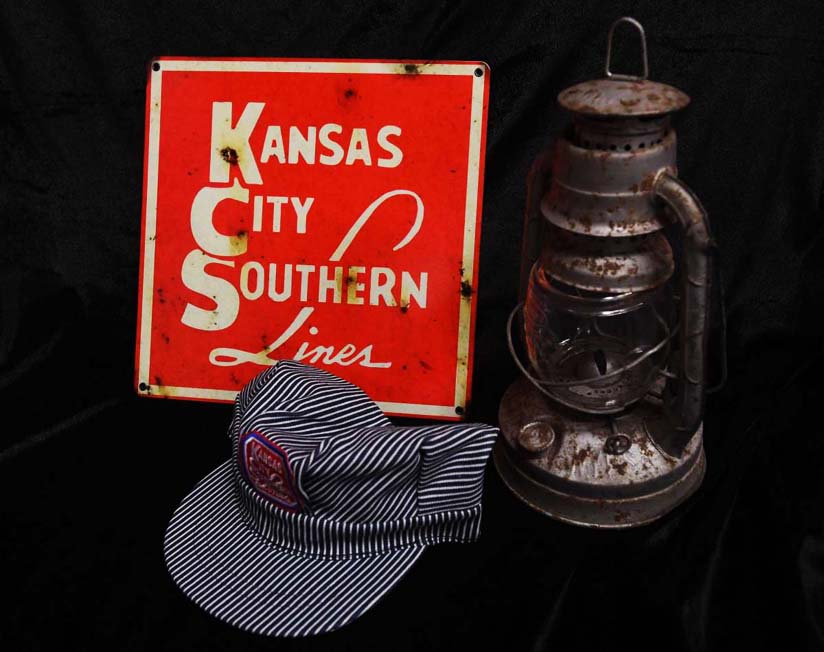
Port Arthur Texas USA - The stories of the birth of Port Arthur and the Kansas City Southern railroad are closely intertwined, but now that
KCS is on the verge of being acquired some keepers of the city's history are wondering what the next chapter will bring.
Canadian Pacific Railway Limited (CP) and KCS announced a proposal Monday for CP to acquire the Midwestern company in a US$29 billion merger, creating the
first continuous rail network between the U.S., Mexico, and Canada, if approved by regulators.
The network would connect key hubs in Canada directly to ports in the U.S. Gulf Coast and Mexico directly through the KCS line that runs from Kansas City,
Missouri, through Beaumont and west to the border.
The idea of a massive rail network connecting north and south through Southeast Texas holds potential change for the area, but Tom Neal, director of the
Museum of the Gulf Coast, also finds it uncanny considering the plans of the railroads forefather.
Arthur Stilwell, the namesake of Port Arthur, founded the predecessor of KCS, the Kansas City Pittsburg & Gulf Railroad, with a plan to create a bridge
between manufacturers and commodity producers in the north and south in hopes of making a more efficient national economy.
In marketing posters for the line Stilwell used to encourage investors and support, a man on a watchtower was depicted shining a light for America to follow
through Kansas and the middle of the country into the Gulf of Mexico.
At the end of that original line, Stilwell created Port Arthur as both the perfect seaport location for his railroad to connect to and as a summer
paradise.
Neal said the proposed KCS merger strangely echoes the same kind of dynamics that led Stilwell to search for new options for the nation's
shippers.
"They were dreaming about this at the turn of the 20th century, and now here we are seeing where it's gone all those years later," Neal
said.
Neal said it was that same dream that helped create Port Arthur and laid the way for the region to become an economic powerhouse during the coming oil
rush.
The city's existence in itself is a product of Stilwell's temperament and his intense belief in the spiritual word.
As expressed in Stilwell's own words in his biography, the tycoon's prayers for guidance while building the railroad were answered in the form of spirits he
called "Brownies," according to a 1948 Enterprise article.
"I was warned by my nightly advisors not to make Galveston the terminal of the Kansas City Southern Railroad, because that city was destined to be
destroyed by a tidal wave," Stilwell wrote in his autobiography.
Five years after Stilwell established the city of Port Arthur, Galveston was flattened by the catastrophic 1900 hurricane, which killed about 8,000
people.
Even after wildcatters and oil derricks became a distant memory around Southeast Texas, the KCS helped shape the identity of the area as a shipping and
military logistics hub.
Father Sinclair Oubre, executive director of Port Arthur's International Seafarers' Center, said the connection to railroads may be more muted now, but the
area's transportation infrastructure is even more important now than in Stilwell's day.
"Most people probably think their gas comes from a pump, or their cars are somehow flown here. Most things we rely on get to us by ship and rail, and
something like an integrated train system would mean a significant impact for Port Arthur," Oubre said.
Plenty of memorabilia remains to remind of the KCS' legacy, including artifacts at the Seafarers' Center and Museum of the Gulf Coast, and the history
maintained by the company itself.
Representatives from the company told the Enterprise that there were plans to maintain both the history of KCS and its relations with communities connected to
it in the event of an acquisition.
"Kansas City Southern has a long tradition of civic involvement and charitable giving in the communities through which it operates which I'm sure that
will continue in the future. Likewise, CP has a similar tradition, and their corporate culture also respects and engages with local communities," C.
Doniele Carlson, a spokesperson with KCS, wrote in an email.
Jacob Dick.
(because there was no image with original article)
(usually because it's been seen before)
provisions in Section 29 of the Canadian
Copyright Modernization Act.
